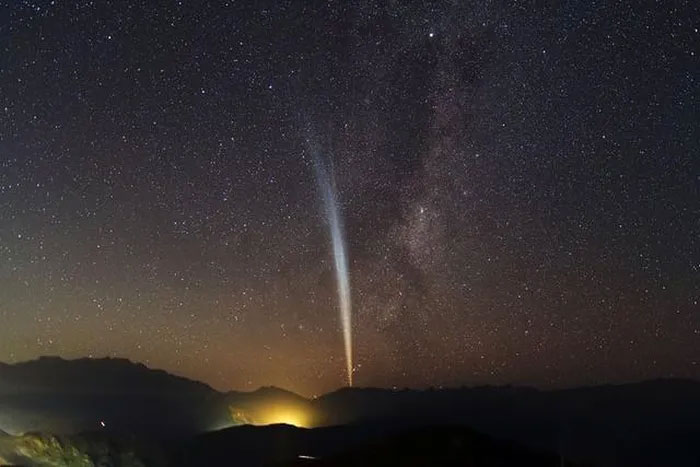Another comet is about to shine brighter than Venus in the sky
A new comet named A11bP71 was discovered on September 27 by the Asteroid Impact Last Alert System (ATLAS) with a brightness so high that it surpassed Venus, becoming a sparkling star in the night sky.
According to the Hanoi Astronomical Society (HAS), comet C/2023 A3 is brightening very quickly. Currently, this comet has an apparent magnitude of 1.7 and is located in the zodiac constellation Leo.
The first week of October is also the last chance to observe C/2023 A3 in the morning sky. After this time, it will hide in the sunlight for a while before returning to the afternoon sky after October 12 with a much more impressive display.

Comets lighting up the sky are astronomical phenomena that attract attention.
After C/2023 A3, at the end of October, another comet may continue to light up the sky. Specifically, a new comet named A11bP71 was discovered on September 27 by the Asteroid Impact Last Alert System (ATLAS) . According to initial calculations, it is a Kreutz sungrazer comet (comets that orbit very close to the Sun and are exposed to extremely high temperatures at perihelion) . It is expected that this comet will reach perihelion on October 28 and may reach an apparent magnitude of -6, which is about 3 times brighter than Venus.
Because it is a relatively new comet, the details of its orbit are still unclear. It could very well end up colliding with the Sun, or in the unlikely event of a collision, it could still disintegrate shortly after perihelion.
During its perihelion transit, the comet will be well visible from the Southern Hemisphere , while from the Northern Hemisphere you will only be able to see a small portion of its tail. And if it survives perihelion, A11bP71 may even be visible in the daytime sky right next to the bright disk of the Sun before it moves further north, allowing for post-perihelion observations in the Northern Hemisphere.
- Comet is brighter than the full moon visiting Earth in 2013
- Watching great comets shine brightly in the sky for 18 months
- The comet of the century will not light
- McNaught - the brightest comet in the past 30 years
- Overview of Venus
- Venus can stay?
- Video: Comet hit the sun
- NASA wants to bring people to Venus
- Venus Experss are about to plunge into the Venusian atmosphere
- Venus is about to be a
- Century comets
- After 8 years of Venus exploration, Venus Express has run out of fuel
 Van Allen's belt and evidence that the Apollo 11 mission to the Moon was myth
Van Allen's belt and evidence that the Apollo 11 mission to the Moon was myth The levels of civilization in the universe (Kardashev scale)
The levels of civilization in the universe (Kardashev scale) Today Mars, the sun and the Earth are aligned
Today Mars, the sun and the Earth are aligned The Amazon owner announced a secret plan to build a space base for thousands of people
The Amazon owner announced a secret plan to build a space base for thousands of people